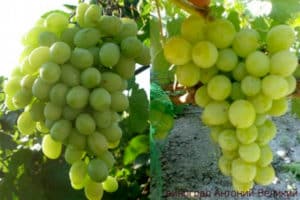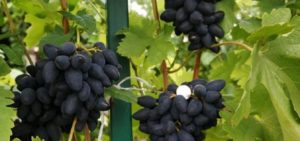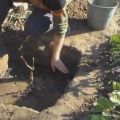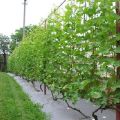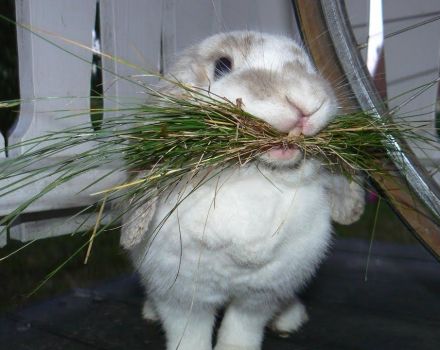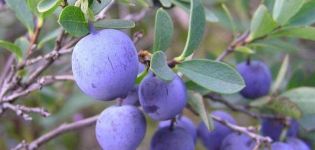In what year after planting seedlings grapes bear fruit, when the first harvest begins
The arrangement of a prosperous vineyard on your site requires a certain amount of knowledge from the gardener on this topic. It is important to study not only the main agrotechnical measures, but also information about the year after planting the grapes are able to bear fruit. This will allow you to avoid many mistakes in striving to get an early harvest and try the first juicy berries already in the 2-3rd year.
Time of the beginning of fruiting
When growing non-irrigated grapes on an industrial scale, the bushes are not allowed to bear fruit until the age of four. It is believed that only by this time the plant is able to give a harvest without prejudice to its health and the quality of the berries. The bush must have time to build up a sufficient volume of root mass before entering fruiting. After pruning, the plant takes on a shape suitable for the given climatic and soil conditions.
The first four years of competent formation of the bushes allow subsequently spending a minimum amount of time on caring for the vineyard. This is especially important for non-irrigated plantings of large farms. When the grapes begin to bear fruit, the bushes already have powerful roots up to 2-3 meters in depth and a developed above-ground part of the bush.
On your site, the first bunches can be obtained 1-2 years earlier. Regular watering and feeding removes most of the load on the production of moisture and nutrients from the plant. The main task for the gardener after planting is to have time to grow a strong ripe vine during the season. It will depend on what year the grapes will be ready to give the first inflorescences and fruits.
Using some agricultural techniques, you can stimulate the growth and development of the bush.
Factors affecting fruiting
With proper care, you can taste the first grapes already 2-3 years after planting. But sometimes the gardener cannot achieve the harvest even in the 5-6th year. The ability of bushes to bear fruit depends on many conditions.
Time
Vegetative cuttings with a bare dried root, planted in late spring, will hurt for a long time, the vine, most likely, will not have time to ripen and will not survive the winter. Even with perfect care, you should not expect fruiting from such grapes in the coming years.
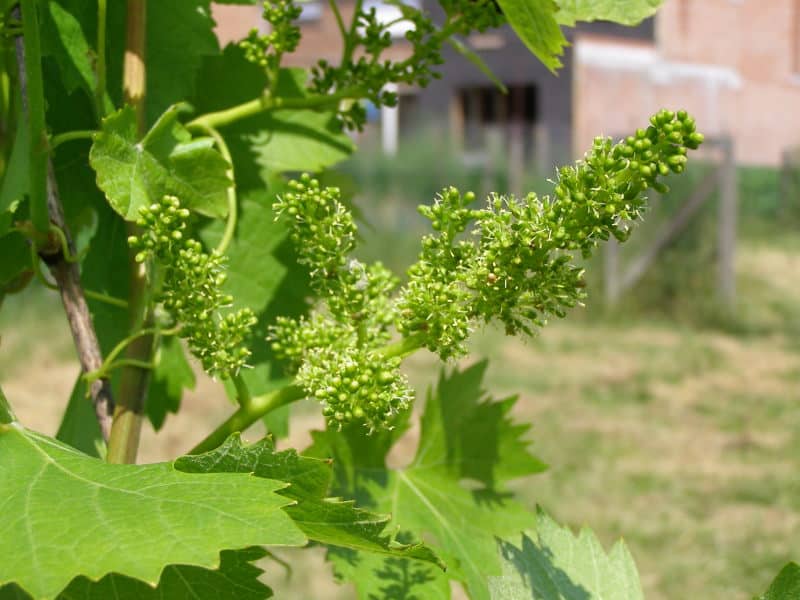
Purchased seedlings must be taken with a closed root. If this is an autumn planting, then it is recommended to pay attention to the condition of the vine, the growth of this summer should be ripe (not green), at least 6-7 mm thick. Such a seedling, qualitatively sheltered from the cold, will tolerate the winter well and is able to bloom the next season.
In spring, grapes are planted in several ways:
- sleeping cuttings in early spring before the start of sap flow;
- by already awakened vegetative cuttings (seedlings) in late May - early June;
- 2-3-year-old seedlings before sap flow.
When planting in the first way, the plant takes root more easily, gets sick less, but, most likely, will not have time to give a sufficient increase for fruiting for the next year.
The second method involves planting cuttings at the end of February in plastic bottles in the warmth. By the beginning of May, the cuttings will give an increase of up to 50 cm. When planting, they make careful transshipment without disturbing the earthy coma. With good care, such a seedling will most likely give out the first inflorescences next year. In this case, you can leave one small inflorescence on the strongest shoot and try the first berries.
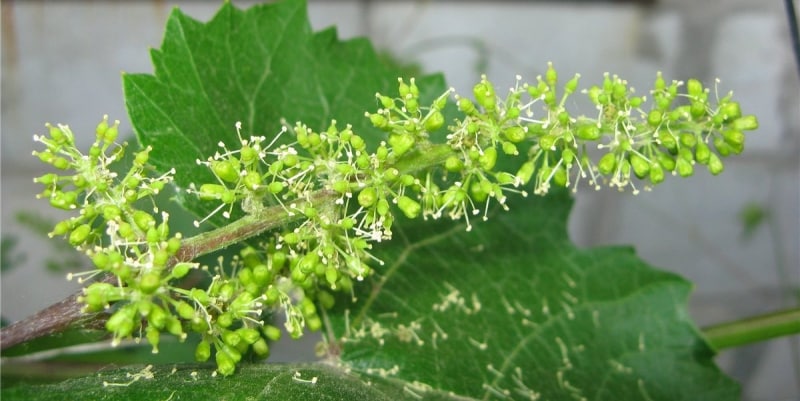
2-3-year-old cuttings do not always take root well, but with proper care they bear fruit the next year. In the year of planting, the inflorescences must be removed so as not to weaken the plant.
A place
The grapes are very picky about sunlight, they do not tolerate cool lowlands and foothills. In a shaded, humid place, the grapes will quickly grow green mass, the vine will not ripen until the end of the season, will be fragile and thin, and most likely will freeze in winter. Such a vineyard may not bear fruit even in the 5-6th year. A place open on the south side, protected on the north side by buildings or trees, is suitable.
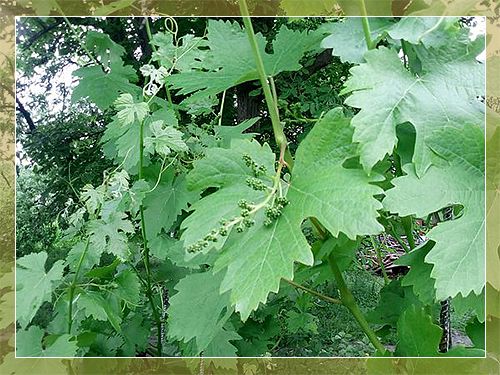
Pruning
When forming young bushes, it should be borne in mind that inflorescences are formed from the middle buds of last year's growth. Pruning too short can prevent the grapes from bearing fruit in the early years. But the lack of pruning can delay fruiting indefinitely. The plant spends too much energy on "unpromising" weak shoots.
Top dressing
The ripening of the vine is largely dependent on the amount of nutrients supplied during the growing season. Excess nitrogen stimulates a large increase, but the vine "fattens", becomes fragile and green, flower buds are poorly formed.
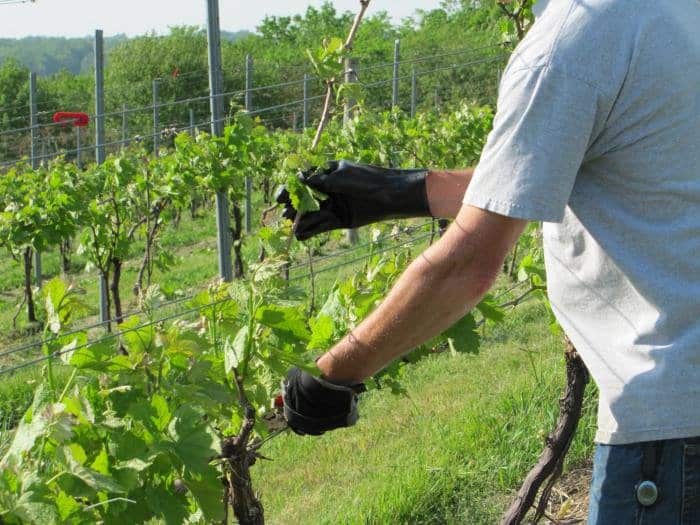
Lack of potassium stops the development of shoots, the plant lags behind in growth, the inflorescences crumble. The lack of organic components in the soil directly affects the taste and quality of the future crop. On poor soils without the introduction of humus and compost, grape bushes grow root mass for a long time and may not bear fruit until 5-6 years.
Care rules
Before planting grapes it is necessary to prepare the soil to a depth of 100 cm. The entire layer is removed, a large amount of humus and compost is introduced, mixed and loosened. Heavy clay soils are additionally diluted with sand. Each bush is allocated at least 2 m in a row. When choosing a place, it should be borne in mind that it is undesirable to plant grapes next to large trees. They actively absorb moisture and nutrients around them. Around the perimeter of the vineyard at a distance of 4-5 m, you can plant a perennial shrub (currant, gooseberry), it will protect the plants from the wind and hold the snow.
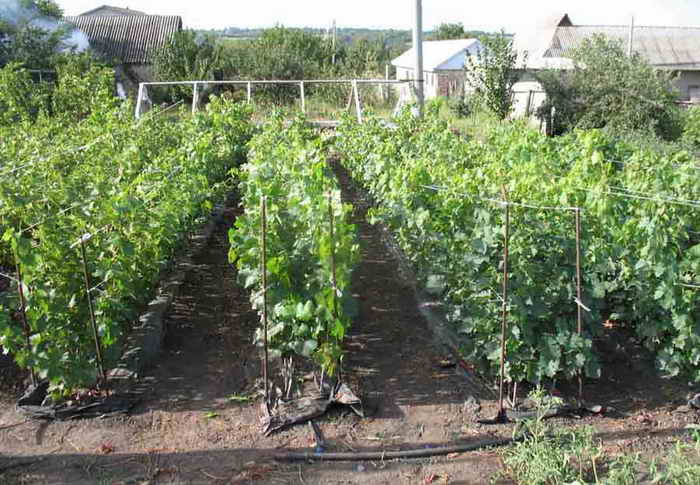
Young bushes are watered 4-5 times per season before fruiting, helping the plants to survive the driest time. By the end of summer, abundant watering can stimulate the active growth of shoots that will no longer have time to mature before the end of the season.It is necessary to ensure that the soil layer is soaked at least 1 meter. Surface moisture stimulates the development of roots in the upper layer of the soil, which dries up in the first place, the plant becomes dependent on frequent watering.
To protect the vineyard soil from drying out and cracking, it is mulched with a thick layer of dry grass or straw.
In late autumn or early spring, humus is introduced in large quantities for digging. In the first half of summer, instead of mineral fertilizers, you can water the grapes with a mullein solution.In the second half, it is better to switch to feeding with bird droppings. Foliar top dressing with potash fertilizers according to the instructions is useful. It is undesirable to completely replace organic fertilizers with mineral fertilizers, the taste and quality of berries depends very much on the "humic" component of the soil.
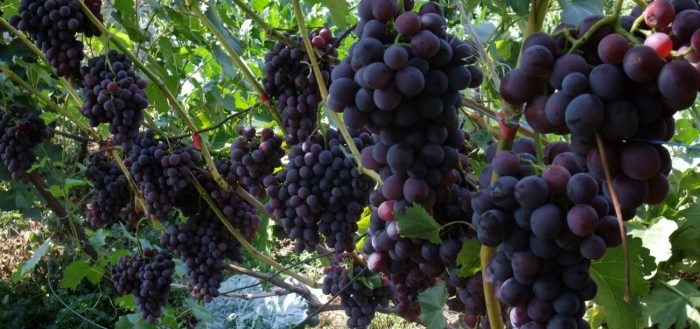
Pruning young bushes in order to accelerate fruiting is minimal. Extra and weak shoots are removed so that the plant does not waste energy on them. One of the largest shoots is lightly pruned, leaving the middle part of the vine with the buds of the inflorescences. The second shoot is cut to the sleeve. Under favorable conditions, such grapes are able to bloom in the second year after planting.
In the first season of fruiting, only one small inflorescence is left to sample the berries. If you do not remove the extra ovary, the plant will spend all its energy on ripening the fruits, this year's vine will not ripen, and the bush will freeze in winter. In autumn, the bushes are carefully covered, the first and second winters after planting are the most responsible. Young vines often freeze, which can delay fruiting for at least one season.
Early harvest methods
Planting three-year-old seedlings with proper care will allow you to get an early harvest next year. Growing seedlings in a bottle from February accelerates the formation and ripening of a full-fledged vine that can bear fruit in the second year.
Unlike growing grapes on an industrial scale, on your site, you can not subject young plants to very short pruning and allow them to bloom for the 2-3rd year. Regular watering and feeding stimulates the accelerated growth of the root system and the maturation of the vine, in contrast to the non-irrigated vineyards of large farms. This allows you to get the harvest 1-2 years earlier.
